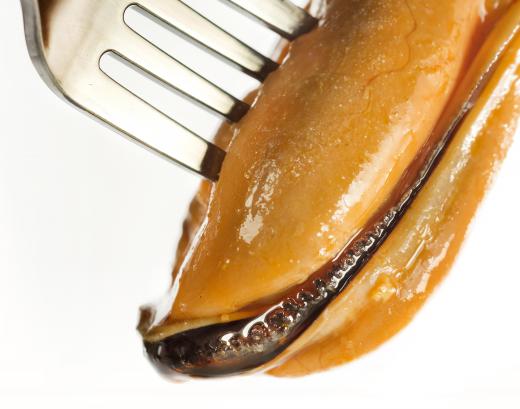Mussel farming is a form of aquaculture that involves raising and harvesting these mollusks in either natural or man-made environments. Marine and freshwater species of mussels are both farmed, though typically for different purposes. Mussels that are farmed specifically for food are mainly grown in marine environments, and freshwater species are typically used to create cultured pearls. Nearly half of all mussel farming takes place in China, which is the world's leading producer of freshwater cultured pearls, though mussels are also grown extensively for food in New Zealand and other areas. The main source of mussel farming in North America is Canada's Prince Edward Island, but the United States also grows these mollusks in Maine and Washington state.
There are many species of bivalve mollusks that are referred to as mussels, all of which can be characterized by elongated shells that tend to be less symmetrical than other types of clams. Mussel shells are dark in color as well, and many species of mussels are blue, brown or black. Not all mussels are palatable, but those that are can be raised for human consumption as a form of aquaculture. Like all mollusks, mussels also are capable of creating pearls by depositing concentric layers of calcium carbonate around a foreign body.

When mussels are raised for food, it typically is done in a marine environment. These filter feeders naturally live in tidal areas, so most farm sites are in tidal zones as well. Farmed mussels can be raised on ropes suspended from buoys, though another method is to install pylons in a tidal zone. Ropes are then wrapped around the pylons in a spiral pattern, and netting is placed around the ropes. The ropes provide a place for the mussels to attach via their byssal threads, and the nets keep them from falling off or being attacked by certain predators.

Freshwater mussel farming can take place in lakes or man-made tanks, where the same rope-and-buoy methods found in marine aquaculture typically are employed. After the mussels have reached a certain size, they can be gently opened and implanted with tissue grafts. In order to maximize production, many grafts are usually inserted into each mussel. The mussels then coat these foreign bodies with calcium carbonate, which is a process that can create a pearl over the course of several months or years, depending on how much time a particular mussel farming operation can afford to invest. Pearls are also cultured in marine aquaculture, though those procedures use oysters instead of mussels.
